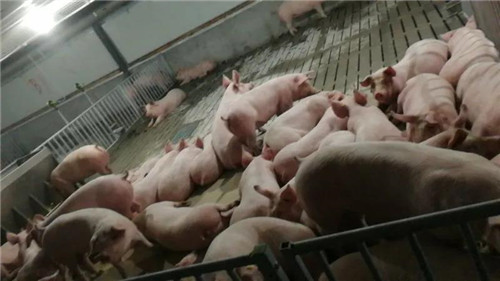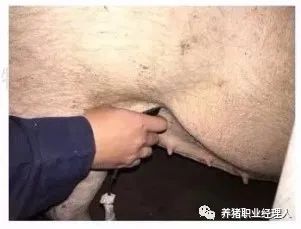What are the monitoring procedures for the sow birth process?
Understanding the normal birth process:
Duration: generally 2 to 4 hours, but may last 8 hours or more;
litter interval: generally 10 to 20 minutes, but there is usually a longer time interval (30-45 minutes) between the first and second litter;
Piglet birth: it is normal for the head or hind legs to come out first;
sow behavior: sow trembles and tries to lift hind legs before farrowing; tail twitches during farrowing;
Stillbirth: occurs mainly in the second half of the litter, 80% of which are the last three piglets born;
The placenta and placenta are usually discharged within one to three hours after birth.
second
Preparation before farrowing
Before farrowing, check the history on the sow card to identify sows with previous farrowing problems or stillbirths, and identify sows most likely to have stillbirths (note that risk is a combination of these factors)
1. Sows with more than five births;
2. Sows that have given birth to stillbirths;
3. Sows with high litter size before, 12 or more;
Note one or more factors likely to cause stillbirth on the litter card of each sow.

three
Code of practice for personnel during farrowing
01
Frequent observation of sows, quiet care and minimal disturbance (people walking behind pigs)
02
When you see the beginning of farrowing, write down the time of the first farrowing and any problems (stillbirth, mummification, deformity, etc.) on the sow card.
03
Continue to pay attention to the record on the sow card during farrowing
04
Observe the abnormal symptoms of the sow carefully
Excessive tension, tremors, tail twitches, but no piglets are born, fierce or aggressive towards piglets;
Sows found to have problems, timely help, if necessary, oxytocin injection;
Primiparous and multiparous sows that were aggressive to piglets were injected with chlorpromazine according to the treatment protocol, and their piglets were placed in a box with a heat lamp hanging above the box
Look closely at the hypoxic piglets
Long intervals between farrowing, especially in the second half of farrowing
Piglet feces stained with yellow or brown skin
Postnatal decline in viability and mobility
Give birth to a stillborn child
05
midwives
Prepare the following items:
Disposable midwifery gloves (towels);
lubricants (obstetric gel);
Wash hands thoroughly;
Remove all faeces from the floor behind the sow;
Wear arm-length disposable plastic gloves;
The person stands behind the pig, if the sow lies to the right, use the right hand to pick the pig, if the sow lies to the left, use the left hand;
Taper the palm to make it easier to enter the sow vulva by putting the thumb and four fingers together, gently push the palm into the vulva and through the cervix, open the palm and feel the blockage caused by the piglet, determine whether the head is in front or the hind legs are in front, the correct posture to hold the piglet depends on the posture of the piglet and the relationship of the hands.
If the piglet is head-first: Place the palm of your hand around the piglet's head, clamp the back of the ear with the first and second fingers, place the thumb under the chin, and pull back while the uterus contracts;
If the hind legs are in front: hold the piglet hind legs with 1, 2, 3 fingers and pull the piglet backward while the uterus contracts or hold the piglet hind legs in the palm with 1, 2, fingers and pull the piglet backward while the uterus contracts. Once the piglet is pulled out, carry out weak baby rescue according to the situation.
Repeat in vivo examination until no other piglets can feel it.
After farrowing, sows were given large doses of long-acting antibiotics according to departmental treatment procedures
Record the delivery time and antibiotic injection on the farrowing card (feed administration is generally adopted afterwards: rigomycin, aureomycin, lactation, etc.)
Note: weak baby rescue, or fake dead piglet, to make sure its umbilical cord and heart are beating, first take out the mucus in the mouth with your hands, hold it with both hands and squeeze it to the middle, or hold the hind legs with your left hand and lift it up, pat it on the back with your right hand, or blow on its mouth.
Key points: record the time of farrowing; people can't leave during labor; the proportion of first fetal pig dystocia is large;
Risk: During midwifery, be careful when sows stand up and get hurt. If bitten or injured by tools, deal with it in time or send it to hospital.
06
Provide a suitable environment for piglets
Prenatal: 1. Adequate nutrition;2. Not contaminated by bacteria;3. Not affected by the environment;4. High temperature.
Postpartum: 1. New environment; 2. Cold;3. Must find their own food;4. More contact with pathogens.
Related
- On the eggshell is a badge full of pride. British Poultry Egg Market and Consumer observation
- British study: 72% of Britons are willing to buy native eggs raised by insects
- Guidelines for friendly egg production revised the increase of space in chicken sheds can not be forced to change feathers and lay eggs.
- Risk of delay in customs clearance Australia suspends lobster exports to China
- Pig semen-the Vector of virus Transmission (4)
- Pig semen-the Vector of virus Transmission (3)
- Five common causes of difficult control of classical swine fever in clinic and their countermeasures
- Foot-and-mouth disease is the most effective way to prevent it!
- PED is the number one killer of piglets and has to be guarded against in autumn and winter.
- What is "yellow fat pig"? Have you ever heard the pig collector talk about "yellow fat pig"?



